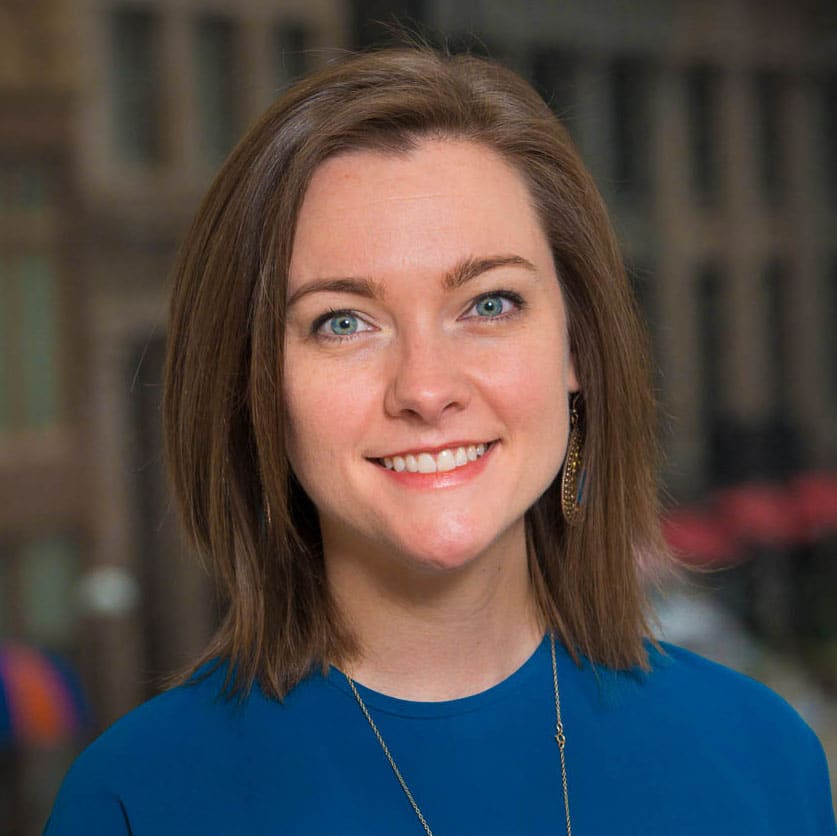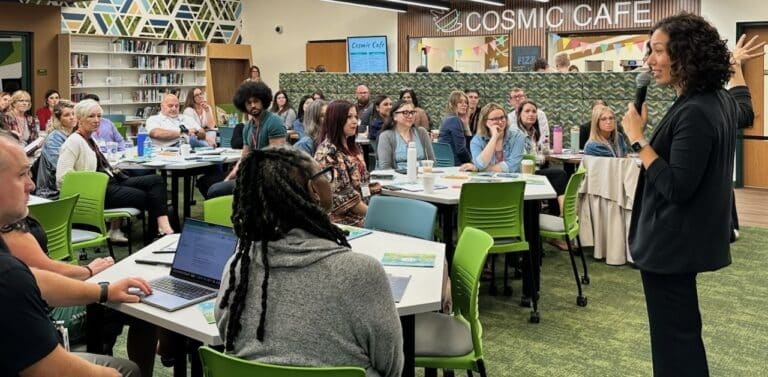This resource was updated and republished in July 2025 with an additional author.
As futurists, we have a natural tendency to think about the kind of world we might live in years from now. But these days, it can be hard to think far into the future when so many of us are grappling with big impacts and shifts right now.
So we might handle life choices day-by-day or even hour-by-hour. The future has the potential to unfold in many ways and exploring those possibilities can be overwhelming. Nevertheless, some of the tools we use as futurists have been helpful in grappling with the uncertainty of the present and making sense of what our preferred future is.
The cone of plausibility
The cone of plausibility is one tool that illustrates why the future is uncertain. It was first created in 1988 to help explore geopolitical scenarios, but what makes this tool especially useful is that it can be used to explore a variety of topics, including the future of learning.

The cone gives us a frame of reference for considering how different the future might be from the present. Often, we are safe to assume that the near-term future will be somewhat different from the present but not drastically so. That notion is illustrated by the narrow end of the cone extending from the present to the future. As we move further into the future, the range of what might be plausible expands. According to this framework, many more possibilities exist five years from now than exist one year from now because more variables are at play.
Exploring plausible, probable, possible and preferred futures with the cone
We can use the cone to model why the future, particularly the long-term future is complex; the more things happen, the more assumptions there are to manage. The future is not a fixed point, and in fact there are many types of futures. When we think about a range of futures, we can organize them into four categories:
- Plausible futures: Possibilities that could happen given the bounds of uncertainty
- Probable futures: Scenarios and possibilities that are likely to happen
- Possible futures: The widest range of scenarios, including all possibilities
- Preferred future: The vision we have for possibilities we want to see come true
Plausible, probable and possible futures deal with inbound change, or changes that happen to us. They are based on assumptions we are making about trends, patterns of change and other factors that impact the future. Preferable futures describe what we want to happen and are rooted in outbound change, or change we create. They are based on our values rather than our assumptions.
Moving from times of uncertainty and toward the future
At its core, the cone of plausibility illustrates why the long-term future is both uncertain and complex. Despite this uncertainty, our culture urges us to act as if we are certain, even when we are not, and to seek certainty where perhaps none exists. That stance not only closes us off to opportunity and to awareness of changing conditions during trying times but also requires that we put on a façade that is not healthy for us or for others.
The cone widens as time goes by because the level of uncertainty increases, stretching what might be considered plausible, meaning that we are all navigating a world with less-than-full information about what is to come, too often without the social capital or financial resources many of us need to weather disruptions. Living with uncertainty in this way is a challenge, and none us are able to do it every day. But when we’re able to apply a foresight lens to our own lives, we move away from fear of the unknown and toward empathy. And when our sense of empathy outweighs our sense of fear, we might become more of who we hope to be for ourselves, for our families and for others in the world.
Exploring your preferred futures with KnowledgeWorks
We also cannot allow uncertainty to bring our lives to a halt. We still have important decisions to make for our families, our livelihoods and our society. How, then, should we approach our present time?
Thinking through multiple futures of learning is something KnowledgeWorks does regularly. That practice is essential for establishing a vision for a preferred future. Tools such as the cone of plausibility help us organize scenarios, discuss possibilities and establish a vision for what we want for the future of learning. KnowledgeWorks’ hope is learning will become human-centered as education constituents work to transform education systems.
In our work with stakeholders:
- We acknowledge that a wide range of possibilities may come to pass. Some of those possibilities might be scary; others might be pleasantly surprising. The future – like the present – will include some features we hope to see and some we do not.
- We articulate uncertainties. We sometimes ask, “What if?” Other times, we identify a topic or an area of life that feels particularly uncertain. We name the uncertainties so we can sit with them, even if we cannot solve them.
- We encourage any emotional response that accompanies the process of facing uncertainty: fear, worry, hope, empowerment, confusion or any other feeling.
- We cultivate curiosity, both about the uncertainties themselves and about the questions and feelings they provoke.
- We look for opportunity amid uncertainty, asking, “What do I have the power to influence in this moment of deep change?” Small actions can have large ripple effects when our environment is shifting rapidly.








